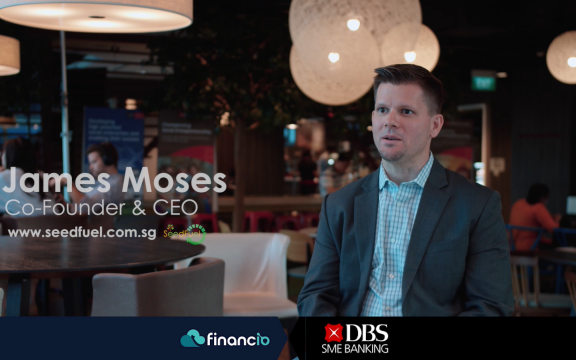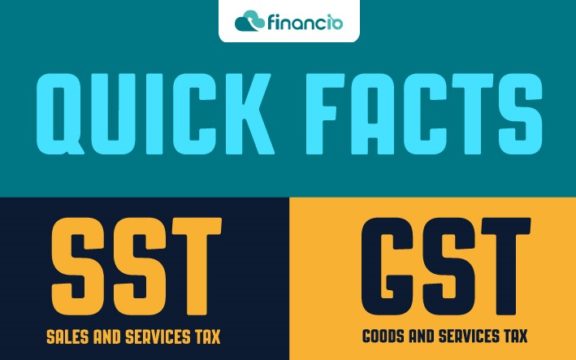Our nation’s economic fate rests upon the success of Small and Medium Enterprises (SME). Today, SMEs seem to have garnered a great amount of interest — as Jack Ma, China’s billionaire tech magnate and owner of Alibaba, takes the lead as Malaysia’s ‘digital economy advisor’ in line with the government’s push to digitise SMEs in Malaysia.
Despite their size, the combined contributions of SMEs are far from insignificant. According to the World Bank, SMEs account for 97% of businesses and 67% of employment in our country.
SMEs contribute up to 36% of our GDP. This GDP contribution decides if Malaysia can transition to a high-income economy, according to the World Bank Group’s Trade and Competitiveness Global Practice.
The vision: What we hope to achieve
As Vision 2020 draws near, there is rising pressure to turn Malaysia into a developed high-income nation. According to SME Corp, the GDP contribution of SMEs must rise from its present 36% to 41%, and the share of SME exports must hit 23% in order to achieve this vision.
The SME Masterplan 2012-2020 by SME Corp is one of the many plans drawn up to bring the vision to reality.
In line with the Economic Transformation Programme (ETP), the SME Masterplan draws up 32 initiatives aimed at rejuvenating SME growth in order to achieve Vision 2020. The main highlights of these initiatives are the ‘Six High Impact Programmes’ and ‘Four Thematic Measures’. Let us look at how these initiatives have contributed to the SME landscape in Malaysia.
The 6 high-impact programmes
With Budget 2015, the government devoted RM310 million to implement the Six High Impact Programmes. These programmes – aimed at improving the productivity of SMEs – have since contributed to developments in various sectors.
As the need for SME growth becomes more crucial, Budget 2017 has allocated an additional RM70 million for the High Impact Programmes.
1. Breaking the barriers
Starting a business requires one to invest time, energy and money. One of the top initiatives of the SME Masterplan is to minimise the time and cost of starting a new business.
In addition to acquiring funding and coming up with a business plan, the bureaucratic hassle of starting a business can often become an added impediment. The Masterplan states that SME Corp would alleviate this by integrating the processes of registering and licensing a business into a single seamless online process.

2. Brainstorming business ideas
Before starting a business, one must have a solid idea in mind. The second initiative of the Masterplan is to maximise the output of business ideas.
When talking about new ideas for today’s SMEs, the topic of ‘start-ups’ is often brought up. With the rapid rise – and subsequent dominance – of global tech start-ups like Facebook, Twitter, and Amazon, there has been phenomenal interest in great ideas that can transform the market.
Steve Blank’s The Startup Owner’s Manual views start-ups as temporary organisations, whose main focus is to experiment and search for novel business models that may potentially become scalable and repeatable. Once a suitable business model is discovered, start-ups can eventually become an enterprise that has a stable way of operating and generating profit.
There has been no shortage of programmes or initiatives lately, designed to drive innovation among start-ups and SMEs. SME Corp’s 1-InnoCERT certification programme, for example, helps to grow and promote businesses in high tech industries. The certification encourages businesses to innovate, invest in research and development, and maintain international standards of quality.
SME Corp has also established the Technology Commercialisation Platform (TCP) to help SMEs and start-ups participate in our national innovation system. Smaller businesses often find it too costly and difficult to market and commercialise their products. The TCP steps in to handle this in a fast and competitive, yet low-cost, method.
3. Financing great endeavours
Start-ups and SMEs may have the greatest ideas, but little can be accomplished if these ideas go unnoticed by investors. The next challenge of the Masterplan involves finances. SME Corp plans to maximise the number of companies funded.
SME Investment Partnership Programme (SIP) was set up to help with early stage financing of SMEs. Among the highlights are its funds for entrepreneurs from diverse backgrounds to start businesses, attend training courses or buy equipment and software for their businesses.
Additionally, Malaysia has also recently encountered game-changers that have placed our nation’s SME scene under the global spotlight. One of them is MaGIC, or the Malaysian Global Innovation and Creativity Centre, founded by Cheryl Yeoh.
Things were going well for Cheryl Yeoh, when she was asked by the government to lead a team that would inject new life into the Malaysian tech entrepreneurship scene.
After completing her studies in New York, Cheryl had been active in the Silicon Valley start-up environment — having founded a successful company Reclip.It, an app that personalises digital ads and coupons. Her company was later acquired by Walmart. Embodying the ‘lean’ start-up concept, she started off her journey with very little in hand, often crashing over at her friend’s living room, sleeping on the sofa, and eating less than US$35 worth of food in a week, while running her business.
Cheryl returned to Malaysia and founded MaGIC in 2014, which was launched by Prime Minister Datuk Seri Najib Razak and the then US president Barrack Obama and. She served as chief executive officer for two years.
The tech start-up scene in Malaysia would not be as vibrant as it is today without MaGIC — a centre aimed at boosting the Malaysian entrepreneurial ecosystem. One of MaGIC’s key wins was inspiring the world to pay attention to our homebred start-ups as the next big thing. The company put Malaysia on the map as an important player in the startup arena, as investors in the past have, for the most part, ignored us in favour of other nations in the region like Singapore, Thailand, Vietnam and Indonesia.
The MAP Investor Demo Day, organised by MaGIC in November 2015, attracted 150 investors from around the globe to listen to 50 start-up pitches from Malaysian technopreneurs. This opened up a gateway for more funding of local companies by prominent organisations, both local and abroad.
4. Bringing it offshore
To even stand a chance at becoming a high-income nation, Malaysian businesses need to not only do well domestically, but also be competitive in the global market. Which brings us to the question: when a business is funded and running, would it stand a chance by competing internationally?
One of the targets of the Masterplan is to maximise exports. Many programmes have been established to help SMEs send their products and services to offshore markets. These include Matrade’s Going Export (GoEx) Programme, Services Export Fund, and Large Corporation-SME Partnership Programme.
These programmes improve the exportability of SME products and services, and eases the cost burden on smaller enterprises to promote and send goods abroad. Collectively, Matrade’s programmes generated a total sales of RM34.6bil in 2015.
5. Finding the next big thing
Since the staggering success of brands like Uber, AirBnB, and Dropbox, investors have searched the globe for the next ultra-high growth firm dubbed ‘unicorns’. In the startup investment world, ‘unicorns are fledgling companies that have a valuation of over US$1bil. They are illusive, yet highly rewarding for seed funders and venture capitalists.
Companies with the policy of ‘Get Big Fast’ (GBF) can be highly valuable to our economy. One of the high impact programmes by SME Corp is to maximise the number of high growth firms. With the Masterplan, SME Corp has set aside resources for the Catalyst Programme which was established to back firms that have the potential to become ‘homegrown champions’.
To help with this goal, Cradle Fund Sdn Bhd, under the purview of the Ministry of Finance, manages an investment programme for start-ups and SMEs. It has 31 co-investment partners from diverse backgrounds, with some from the Equity Crowdfunding sphere, bringing in around RM190 mil in co-investment funds. Notable recipients of Cradle funds include BeMalas, MauKerja and SupplyCart.
In addition, the discovery of high-growth SMEs has also occurred at events where entrepreneurs come to pitch their ideas to investors, such as the MaGIC’s MAP Investor Demo Day.
6. Enabling innovation
The sixth high impact initiative in the Masterplan concerns maximising innovative ideas from the ground up. Innovative ideas coming from the grassroots would be supported and nurtured so that they have the potential to become profitable ventures. This bottom-up approach targets the lower 40% of the income pyramid — the segment of society that is in greatest need of economic development.
SME Corp has programmes such as the Bumiputera Enterprise Enhancement Programme (BEEP), which helps rural or disadvantaged communities to build their core capabilities and promote innovation. One example of a homegrown invention is the H-Micro Hydro system — a small hydroelectric generator that provides electricity to rural inland areas.

Four Thematic Measures
Not to be neglected are the four supporting initiatives in the SME Masterplan that have also contributed to SME growth.
1. Sharing is caring — Resource pooling for SMEs
SMEs are likely to face the problem of scaling as these businesses may be too small to overcome huge logistical problems. The target of the Masterplan is to encourage resource-pooling, so that high costs are not incurred by any single undersized enterprise.
Some of its strategies include encouraging consortiums and Aggregation Service Providers to allow bulk purchases, establishing Logistics Consolidation Centers, and setting up Human Resources (HR) and Organisational Development (OD) academies for building a shared talent pool in these areas.
2. Creating demand
As we tackle the supply side of the equation by promoting the setting of enterprises, the demand side is equally crucial. Creation of demand for SME products and services is an important goal to enable SMEs to gain greater market success. The Masterplan seeks to set up vendor development programmes to encourage Multinational Corporations (MNC) to buy their products and services from SMEs. To accomplish this, SME Corp is trying its best to increase the value of ETP projects awarded to SMEs.
The Masterplan also seeks to expand the procurement of goods and services by the public sector. This is accomplished by having special Government procurement policies for SMEs.
In order to better market their products, SMEs also face the challenge of complying with standards and requirements. Funds have been allocated to help companies cover the cost of certification.
3. Tackling information asymmetry
The third theme is alleviating information asymmetry. In Economics, information asymmetry is the condition where one party has more information than the other during a transaction. This may lead to market failure due to misjudgment of the value of goods.
The solution for this is government intervention in providing advice and creating awareness in key areas, including credit information, Intellectual Property (IP) adoption, and more accurate financial valuation of new technology by establishing an Independent Panel of Experts (IPEs) to advise on the viability of these projects.
4. Improving knowledge and skills
The fourth theme is enhancing knowledge and skills. These initiatives include preparing the new generation of entrants into the workforce. This is done by enhancing the building of human capital via education, polytechnic training and training in specialised skills, to deal with the talent shortage encountered by SMEs. Adoption of technology requires a talent pool that is highly skilled and technologically up-to-date.
Meanwhile, organisations like MaGIC, Next Academy, and MAD Incubator have launched various bootcamps to help new entrepreneurs gain a deeper understanding of technology.
Various companies, from Microsoft Malaysia to TM (with their annual SME BizFest), have offered their technology-based solutions to improve productivity of SMEs — ranging from eCommerce platforms, automation of customer service, to digital inventory management systems.
Making it to the finish line
Vision 2020 may be drawing closer, but there is still more to be done to achieve its lofty goals.
SMEs need to maintain an 8% growth to achieve Vision 2020; but now, the growth rate lingers at around 5%, according to Datuk Hafsah Hashim, chief executive of SME Corp.
To move in the right momentum, we need to increase the average annual rate of business formation by 6%, and that of high growth companies by 10% — growth rates that are challenging to maintain.
As Datuk Hafsah reminds us, “Entrepreneurship is not a 100-meter burst. It is a marathon and needs a lot of energy and a lot of stamina.”
Note: This article first appeared on Leaderonomics.com





































































































































